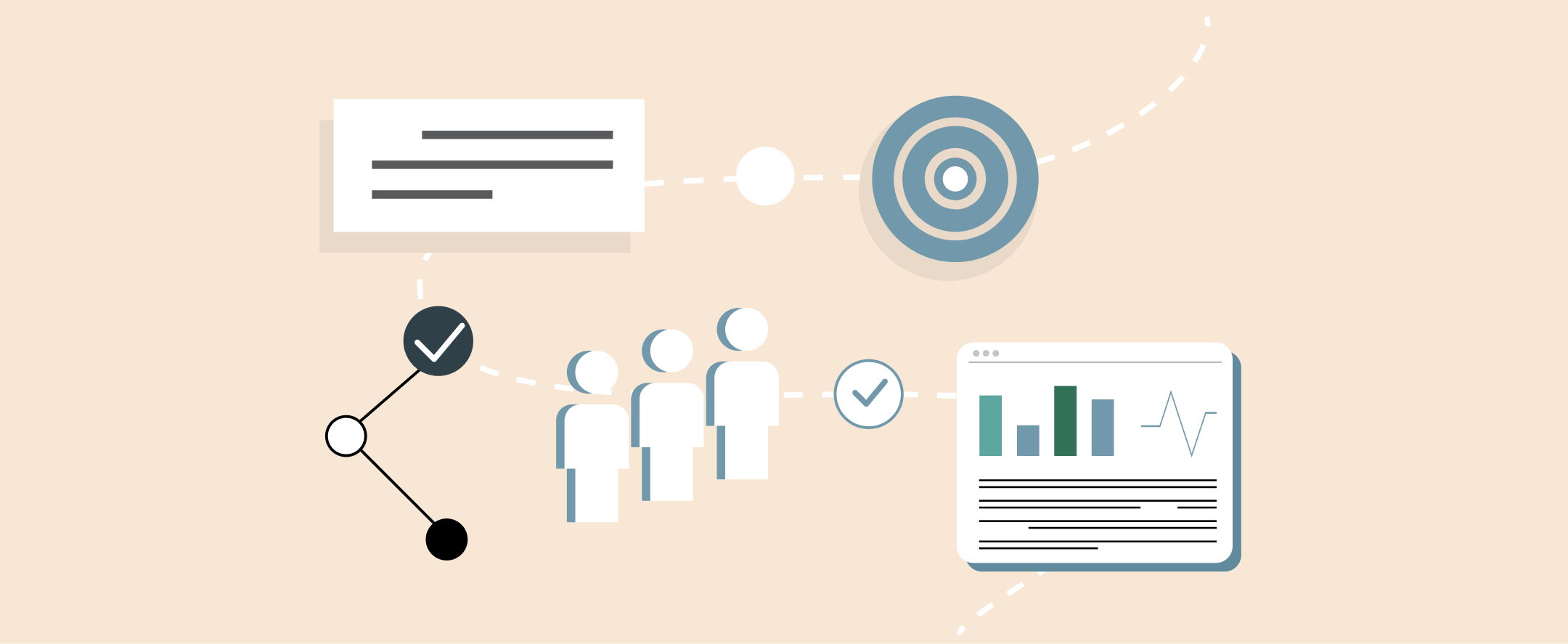Hello!
A popular saying goes: Keep your friends close and your enemies closer.
 Even though it may appear counterintuitive in certain settings, it is sage advice when you are spearheading a business.
Even though it may appear counterintuitive in certain settings, it is sage advice when you are spearheading a business.
When done right, competitive analysis can be a reliable growth hacking technique that gets you at par with established brands and entities. At the same time, it allows you to gain an edge over your competitors by offering that “something more.”
In the digital arena, where it is all about out-ranking your peers, competitive analysis becomes all the more critical. As such, if your competitive website analysis strategy is to pore over their website merely, then you are doing it all wrong.
Let’s first understand how to build a competitive website analysis policy and the tools to deploy for achieving the best results.
How to Conduct a Competitive Analysis
Here is a detailed breakdown of the steps involved in analyzing your competitor’s website:
Define the Key Metrics
The key metrics governing your competitive analysis campaign heavily depend on your organizational goals.
For instance, if you were to increase conversions, you would keep a close eye on the CPC (cost per conversion), bounce rates, etc. Similarly, if you plan on expanding your reach, you would monitor the on-page and off-page SEO efforts and track the total number of visits per session, number of interactions, and so on.
Hence, define the key metrics based on your overall objective.
Identify Your Competitors
Once you gain clarity on the key metrics concerning the analysis, it is time to shortlist your competitors.
Here, assuming established industry leaders to be your competition would narrow its scope. And in the process, you would only end up disappointing yourself.
For a more balanced analysis, you require a diverse set of competitors who can transform your end goals, influence your business decisions, and introduce you to new ideologies. Hence, you must list out different competitors for a more holistic outlook, irrespective of whether they are big or small and direct or indirect (offering a different solution or serving to a different customer set) competitors.
With the above considerations, you can create a comprehensive list of competitors who are worth observing and measuring against.
Evaluate Your Competitor’s Website
 Finally, now is the time when you figure out what makes your competition’s website successful. Here are a few ways in which you can assess their website:
Finally, now is the time when you figure out what makes your competition’s website successful. Here are a few ways in which you can assess their website:
• Reading Their Content
You could develop the flashiest of websites and still fail to attract any traffic. On the other hand, the most basic websites could see many loyal readers simply because they manage to churn out compelling content. So, start by comparing your content quality with that of your competition’s. Apart from its value-adding feature, look out for other formatting considerations, such as a navigable Table of Contents or a helpful FAQ section, which sharpens the content.
• Checking Out the Branding
Branding and brand consistency could clinch the deal and help you stand out from the crowd. To leverage branding as a differentiator, analyze the strategies employed by your competition. Look at the brand representatives, such as the logo, color, theme, etc., which form the core brand identity. Next, explore the brand voice and personality.
Imbibe these within your branding strategy and maintain it uniformly, whether you redesign your logo or draft your social media posts.
• Following Them on Social Media
Social media offers a condensed preview of your website content. Besides, it is an excellent source of traffic.
As such, you must scrutinize your competitor’s social media activity and analyze how they use it to their advantage. You may even discover the platforms they prefer heavily against those they simply use to register their presence.
 Based on these findings, you can develop a similar SMM model that ropes in the maximum audience.
Based on these findings, you can develop a similar SMM model that ropes in the maximum audience.
• Becoming a Customer
Sometimes, you may discover the true value offering of any organization by actually using their product or service. Conversely, you may also discover the chinks in their armor by experiencing the product rather than accepting their market standing at face value.
By enlisting as a customer, you get the first-hand experience of the complete customer journey. Note the flow of events leading to the purchase and the after-sales services, if any. Locate any areas of improvement and strengthen them within your operations. Become a subscriber to their email marketing campaigns to identify any existing patterns. Finally, test out their customer support by bowling a few common queries.
Incorporate the elements that you like and appreciate as a customer within your own business.
10 Competitor Analysis Tools to Keep an Eye on Your Competitors
Naturally, manually combing through your competitor’s website is not enough to get a holistic overview of what they have on you. You need to use tools to measure, quantify, and compare such abstract qualities. Here are a few of these that may come in handy:
SEMrush
 SEMrush is a popular SEO tool that can measure the organic and paid search ranking of any website. Plus, you can assess the performance of desktop and mobile versions separately. The free version allows users to explore the top ten organically ranking phrases, while the paid version comes equipped with added functionalities. The paid features include advanced filters, site audits, brand tracking, social media integration, and more.
SEMrush is a popular SEO tool that can measure the organic and paid search ranking of any website. Plus, you can assess the performance of desktop and mobile versions separately. The free version allows users to explore the top ten organically ranking phrases, while the paid version comes equipped with added functionalities. The paid features include advanced filters, site audits, brand tracking, social media integration, and more.
Ahrefs
While Ahrefs does not offer a free version, you can try out the platform through its 14-day trial. The website is an extensive repository of all the key phrases that can get your website noticed. More specifically, it hosts more than four billion key phrases, which speaks volumes about its potential. Apart from key phrase tracking, you can use Ahrefs as a dependable SEO solution with its detailed reports and analysis.
Alexa
Alexa is yet another well-known competitive analysis tool that ascribes the Alexa Rank - a global or regional ranking based on the website’s popularity. The paid version takes a deep dive into the competitive analysis by carrying out a head-to-head comparison of the phrases, their uses, and impact. You can also use Alexa to spy on your competition or create detailed site visitor reports based on various factors.
BuiltWith
 Sometimes, the comparison would call upon checking out what goes on under the hood. In this case, BuiltWith would be your best bet at examining the website technology, such as the CMS, CDN, plugins, etc., that may differentiate your competitor’s website from that of your own. It also grants an overview of the tools driving the marketing efforts or similar tasks. The BuiltWith Chrome extension allows you to take a peek at the underlying technologies with a simple click.
Sometimes, the comparison would call upon checking out what goes on under the hood. In this case, BuiltWith would be your best bet at examining the website technology, such as the CMS, CDN, plugins, etc., that may differentiate your competitor’s website from that of your own. It also grants an overview of the tools driving the marketing efforts or similar tasks. The BuiltWith Chrome extension allows you to take a peek at the underlying technologies with a simple click.
Buzzsumo
Your social media is an extension of your website and your brand. As such, you must also keep a close eye on your competitor’s social media activities. Buzzsumo analyzes your competitor’s social media profile and lists out their high-performing posts. Based on these findings, you can formulate the best content strategy to reel in your audiences and keep them engaged over social media.
MOZ
Moz is a well-established SEO leader with a knack for creating detailed and insightful reports based on various parameters. The website can cater to end-to-end business requirements from crafting a marketing campaign to carrying out a site-wide audit. The paid version grants the users access to crawlers that can sweep through your website and identify the weak areas. Moz’s Link Explorer quantifies the site’s popularity by mapping it as “Domain Authority.”
Quantcast
Quantcast acts as a window to understand your audiences intimately. It offers a snapshot of the audience demographics, their behavior, and data consumption across various apps and websites. Quantcast has grown into a powerful marketing tool as it aids marketers in segmenting and targeting their prospects. However, the true value of the application lies in its paid version, as the free version only displays the basic traffic levels.
SimilarWeb
As the name indicates, SimilarWeb groups similar websites and indicates their standing through a category rank. This category rank depends on the overall global or regional rank based on the traffic. You may also run your competitor’s website on the platform to analyze their preferred marketing tools and advertising channels. While it offers a free version of the service, the premium version possesses much more capabilities.
WhatRunsWhere
 If you want to take on a more localized approach to asserting your dominance, you will need the WhatRunsWhere tool. WhatRunsWhere gives you an overview of your competitor’s advertising strategies. By analyzing this aspect, you can tap into their existing networks and utilize the same set of keywords to break into the scene. Additionally, the tool also highlights your competitor’s advertising journey and how they have evolved over the years. By identifying any recurring patterns or keywords, you can capitalize on strategies that are proven to be effective.
If you want to take on a more localized approach to asserting your dominance, you will need the WhatRunsWhere tool. WhatRunsWhere gives you an overview of your competitor’s advertising strategies. By analyzing this aspect, you can tap into their existing networks and utilize the same set of keywords to break into the scene. Additionally, the tool also highlights your competitor’s advertising journey and how they have evolved over the years. By identifying any recurring patterns or keywords, you can capitalize on strategies that are proven to be effective.
Datanyze
If your leads are hitting a cold dead end, you can amp it up using the Datanyze tool. In addition to revitalizing your prospecting and lead generation efforts, Datanyze can evaluate your competitor’s business details and technological framework. One can use it to gain an idea of the bottlenecks plaguing the competition, and as such, could potentially pose a threat to your operations.
Your Website is The Reflection of Your Business - Improve it
Eventually, exploiting the insights gained from the competitive analysis is as crucial as extracting such information. Use these inputs wisely to rework your website. Once you play to your strengths and address your weaknesses, you will finally strike a balance to ensure your website’s success!
- Website Optimization Aspects You Should Pay Attention To
- 2025: The Year of AI Agents – What Are We Going to Do?
- 4 Ways to Create a Secure network for Remote Workers
Thank you!
Subscribe to our newsletter! Join us on social networks!
See you






